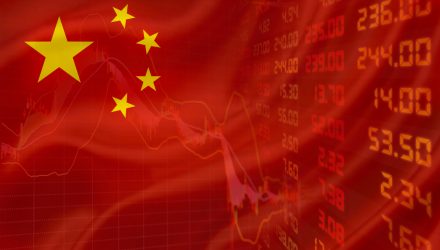By Fran Rodilosso, Head of Fixed Income ETF Portfolio Management, CFA, VanEck
The classic 60/40 portfolio has been challenged due to the extremely low yields in developed markets currently, with prospects for a meaningful increase appearing unlikely any time soon. This has driven many investors to increase their risk exposure to maintain an adequate yield, by increasing allocations to non-core asset classes such as high yield credit, emerging markets debt and equity income. While these can provide an attractive yield pickup, they do not come without additional risks. In addition, an investor’s exposure to equity markets increases with these asset classes due to their higher correlation to stocks, increasing the risk of drawdowns and higher volatility.
Outside of the U.S., however, there are still opportunities to use a broad fixed income allocation as both a yield enhancer as well as a diversifier and risk-reducer within a diversified portfolio. China’s onshore bond markets, in particular, may be attractive to the growing number of investors seeking exposure to that country’s impressive economic growth and ongoing transformation into a consumer led economy. Adding bonds to an equity exposure historically has helped to increase risk adjusted returns by lowering volatility and drawdowns. A simplified analysis using two asset classes, large cap equities (represented by the CSI 300 Index) and investment grade aggregate fixed income (represented by the ChinaBond China High Quality Bond Index) helps to illustrate this. Although an efficient frontier analysis would suggest a much higher allocation to bonds to optimize the risk/return tradeoff, we think a 60/40 allocation serves as a useful benchmark. Since we believe the asset allocation decision within China is distinct from the currency analysis, we show the risk and return statistics in both CNY and USD terms.
Growth of a Balanced China Portfolio

| February 2012 through November 2020 | |||||||||
| Return | Std Dev | Sharpe Ratio | Max Drawdown | Yield | |||||
| USD | CNY | USD | CNY | USD | CNY | USD | CNY | ||
| Onshore Bonds | 3.94 | 4.44 | 4.52 | 2.78 | 0.72 | 0.69 | -7.14 | -3.78 | 3.55% |
| A-Shares | 10.14 | 10.67 | 24.81 | 23.47 | 0.48 | 0.47 | -42.98 | -39.78 | 1.80% |
| China 60-40 | 8.34 | 8.86 | 15.52 | 14.01 | 0.55 | 0.53 | -27.20 | -23.11 | 2.50% |
Source: Morningstar and Bloomberg, as of 11/30/2020.
The blended portfolio provides not only a higher yield, but also a significantly improved risk adjusted return due to the negative correlation between the two asset classes. Volatility and maximum drawdown of the 60/40 blend is nearly 40% lower than an all-equity exposure, while capturing 0.70% of additional annual yield. A blended portfolio may also benefit from the many tailwinds that we expect onshore bonds to benefit from going forward, including positive real yields, several potential sources of support for CNY and increasing inflows from international investors. We believe a less aggressive tone from Washington D.C. may also benefit a China oriented portfolio.
Originally published by VanEck, 12/17/20
DISCLOSURE
Please note that VanEck may offer investments products that invest in the asset class(es) discussed herein.
CSI 300 Index is comprised of the 300 largest and most liquid stocks in the Chinese A-share market.
ChinaBond China High Quality Bond Index comprises fixed-rate, Renminbi (RMB)-denominated bonds issued in the People’s Republic of China by Chinese credit, governmental, and quasi-governmental (e.g., policy banks) issuers.
This content is published in the United States for residents of specified countries. Investors are subject to securities and tax regulations within their applicable jurisdictions that are not addressed in this content. Nothing in this content should be considered a solicitation to buy or an offer to sell shares of any investment in any jurisdiction where the offer or solicitation would be unlawful under the securities laws of such jurisdiction, nor is it intended as investment, tax, financial, or legal advice. Investors should seek such professional advice for their particular situation and jurisdiction.
This is not an offer to buy or sell, or a recommendation to buy or sell any of the securities mentioned herein. The information presented does not involve the rendering of personalized investment, financial, legal, or tax advice. Certain statements contained herein may constitute projections, forecasts and other forward looking statements, which do not reflect actual results, are valid as of the date of this communication and subject to change without notice. Information provided by third party sources are believed to be reliable and have not been independently verified for accuracy or completeness and cannot be guaranteed. The information herein represents the opinion of the author(s), but not necessarily those of VanEck.
All investing is subject to risk, including the possible loss of the money you invest. Bonds and bond funds will decrease in value as interest rates rise. As with any investment strategy, there is no guarantee that investment objectives will be met and investors may lose money. Diversification does not ensure a profit or protect against a loss in a declining market. Past performance is no guarantee of future results.







